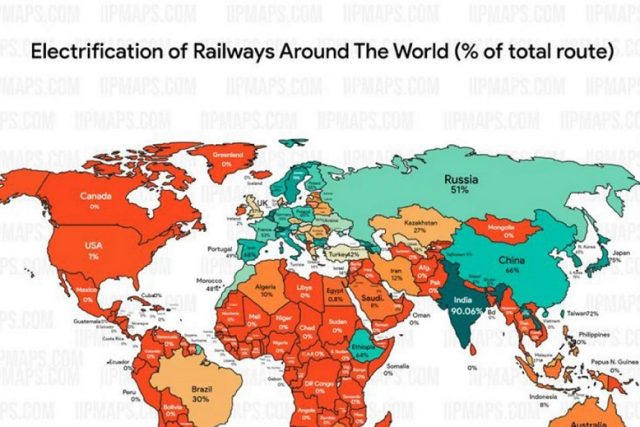Electrification of railways is the main topic for this article. Kenya has zero percent of electrified railways despite recently completing their construction of the Standard Gauge Railway (SGR) which they had a chance to electrify but chose to go for the diesel one. SGR depends on fossil fuels which the world is trying to phase out.
Electrification of railways is important for several reasons:
- Environmental Benefits: Electrified railways produce fewer greenhouse gas emissions compared to diesel-powered trains. They help reduce air pollution and contribute to efforts to mitigate climate change by decreasing reliance on fossil fuels.
- Energy Efficiency: Electric trains are more energy-efficient than diesel trains. Electric traction systems can convert a higher percentage of energy from the power source into useful work, resulting in lower energy consumption per unit of distance traveled.
- Cost Savings: While the initial investment in electrification infrastructure may be significant, electrified railways often have lower operating costs in the long run. Electric trains generally require less maintenance and have lower fuel costs compared to diesel trains.
- Reliability and Performance: Electric trains tend to have better acceleration and braking performance compared to diesel trains, leading to shorter travel times and improved scheduling reliability. Additionally, electric traction systems provide smoother and quieter rides for passengers.
- Reduced Dependence on Imported Fuels: Electrified railways reduce dependence on imported diesel fuel, which can be subject to price volatility and geopolitical risks. By using domestically produced electricity or renewable energy sources, countries can enhance energy security and reduce their exposure to external supply disruptions.
- Compatibility with Renewable Energy: Electrified railways can be powered by renewable energy sources such as wind, solar, and hydroelectric power. This helps reduce reliance on fossil fuels and promotes the transition to a more sustainable energy mix.
- Modernization and Innovation: Electrification of railways often goes hand in hand with modernization efforts, including the adoption of advanced signaling systems, communication technologies, and rolling stock. These improvements enhance the overall efficiency, safety, and attractiveness of rail transportation.
- Capacity and Flexibility: Electrified railways can handle heavier loads and higher speeds compared to diesel-powered lines, allowing for increased capacity and flexibility in passenger and freight transportation. This is particularly important in densely populated regions and busy transportation corridors.
Overall, electrification of railways offers numerous benefits ranging from environmental sustainability and energy efficiency to cost savings and improved performance. As countries seek to decarbonize their transportation sectors and enhance the resilience of their infrastructure, electrified railways play a crucial role in achieving these objectives.
While we are at it, India has 90 percent of their railways electrified. In Africa, Ethiopia has electrified 64% of their railways.
End


